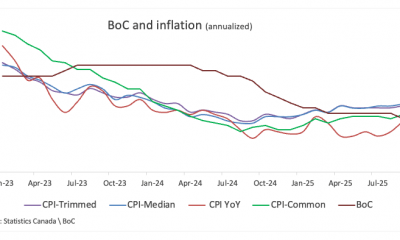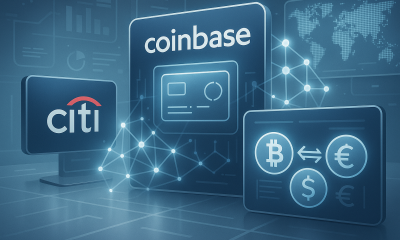
Metaverse
India unveils landmark AI governance guidelines — know what changes for startups, developers – Crypto News
The Ministry of Electronics and Information Technology (MeitY) on Wednesday published a seven-point artificial intelligence (AI) governance framework under the IndiaAI Mission—the nodal body tasked with developing built-from-scratch AI models native to Indian languages.
In the framework, the IT ministry has detailed that corporates and startups developing AI models and applications in India will need to use trusted data sources and offer transparency in the model’s workings as their key features.
The framework also details that ‘people first’ AI projects will be the ideal development area for companies, reiterating the government’s stance of using AI applications and models for public services.
The Centre has so far approved 12 startups under the AI Mission, offering $112 million to IIT Bombay-backed entity BharatGen in September. The framework will be applicable to the chosen startups under the mission, as well as other entities building AI in India.
A senior government official with direct knowledge of the matter told Livemint that while the framework released is not binding or applicable legally, it may set the tone for the regulatory approach that India is taking with AI.
“This is a set of expert committee observations and recommendations that suggest that if we want to pursue regulating AI in future, this is the approach that we can take. It also underlines that we must not look to establish a new law for AI unless absolutely necessary, and I think in a way it validates the approach that the government has taken so far,” the official said.
A second official added that the framework also clearly shows that the focus for the Centre will remain on building public utilities, such as the India AI Mission, which entails the use of public money for incentivization of the sector.
“This is important, because the governance framework does not necessarily apply to commercial entities building out of India,“ Deepro Guha, associate director for public policy at think-tank The Quantum Hub, said, adding that the framework offers ample insight into how regulations may evolve in future for AI.
“The techno-legal approach that the framework underlines is an interesting take on how the sector may evolve in future, and how regulations will adapt to a future where India may develop digital public infrastructure for AI. The framework has also offered ample thought into how laws will be amended to accommodate the advent of AI—such as the use of copyright laws to deal with infringement issues. Otherwise, it is a non-binding directional document that may not necessarily dictate how the industry will evolve in India,” he said.
Core principles and objectives
The guidelines are designed to strike a balance between innovation and accountability, ensuring that AI drives inclusive growth and maintains public trust.
The framework is focused on seven key principles: Trust, People First, Innovation over Restraint, Fairness & Equity, Accountability, Understandable by Design, and Safety, Resilience and Sustainability.
Dhruv Garg, cofounder and partner at India Governance and Policy Project (Igap), added that the framework “reflects a mature understanding of how fast the technology is evolving”.
“It’s a light but deliberate framework, prioritizing coordination and standards over control. Some concepts within this document would definitely need to align with the first principles of AI around privacy, rights-based approach, and rational platform governance. The next step will depend on what Meity, as the nodal ministry, identifies as its priority areas—be it institutional capacity, safety testing, or standard-setting,” he pointed out.
“A lot more coordination and consultation will be needed across ministries, regulators, and industry and other stakeholders before India can move toward a standalone AI law, sectoral regulations, or integrate AI provisions into any future IT Act refresh. Building that consensus will be key to ensuring that regulation keeps pace with innovation,” Garg added.
Move to boost AI infrastructure
The document highlights significant steps the government has already taken to build the national AI infrastructure backbone.
Compute Power: Over 38,231 GPUs (Graphics Processing Units) are being made available to startups, researchers, and developers at subsidised rates. A secure GPU cluster housing 3,000 next-generation GPUs is also under construction for sovereign and strategic applications.
Data & Models (AIKosh): The AIKosh platform has onboarded 1,500 datasets and 217 AI models from 34 entities across 20 sectors. It provides permission-based access, allowing contributors to retain control over data usage while facilitating AI development.
Startup Support: Four startups are being supported in the first phase to develop India’s sovereign models. They will receive credits and funding covering up to 25% of compute costs, provided through a mix of grants (40%) and equity (60%).
Governance and regulatory structure
The framework details a robust structure integrating governance, regulation, and oversight through the establishment of key bodies:
- AI Governance Group (AIGG): Responsible for overall governance.
- Technology and Policy Expert Committee (TPEC): Provides technical and policy support.
- AI Safety Institute (AISI): Focused on safety and risk mitigation.
The central government’s Principal Scientific Adviser Ajay Kumar Sood emphasised the core ethos of the framework, stating that the guiding principle of India’s AI approach is “Do No Harm.”
He noted that India’s framework will combine innovation sandboxes and risk mitigation mechanisms within a flexible and adaptive regulatory environment, ensuring that AI innovation thrives without jeopardising societal safety.
MeitY Secretary S Krishnan added that these guidelines mark a significant step towards human-centric and responsible AI development. He highlighted that India’s approach, anchored in its Digital Public Infrastructure, will position the country as a global example in safe AI adoption.
-

 Blockchain1 week ago
Blockchain1 week agoXRP Price Gains Traction — Buyers Pile In Ahead Of Key Technical Breakout – Crypto News
-

 Technology1 week ago
Technology1 week agoSam Altman says OpenAI is developing a ‘legitimate AI researcher’ by 2028 that can discover new science on its own – Crypto News
-

 Technology1 week ago
Technology1 week agoBenQ MA270U review: A 4K monitor that actually gets MacBook users right – Crypto News
-

 De-fi1 week ago
De-fi1 week agoBittensor Rallies Ahead of First TAO Halving – Crypto News
-

 Technology1 week ago
Technology1 week agoGiving Nvidias Blackwell chip to China would slash USs AI advantage, experts say – Crypto News
-

 Technology1 week ago
Technology1 week agoMicrosoft ‘tricked users into pricier AI-linked 365 plans,’ says Australian watchdog; files lawsuit – Crypto News
-

 De-fi1 week ago
De-fi1 week agoAI Sector Rebounds as Agent Payment Systems Gain Traction – Crypto News
-

 Blockchain1 week ago
Blockchain1 week agoBig Iran Bank Goes Bankrupt, Affecting 42 Million Customers – Crypto News
-
Business1 week ago
Crypto Market Rally: BTC, ETH, SOL, DOGE Jump 3-7% as US China Trade Talks Progress – Crypto News
-

 others1 week ago
others1 week agoBank of Canada set to cut interest rate for second consecutive meeting – Crypto News
-

 Business1 week ago
Business1 week agoStarbucks Says Turnaround Strategy Drives Growth in Global Sales – Crypto News
-

 Blockchain1 week ago
Blockchain1 week agoIBM Set to Launch Platform for Managing Digital Assets – Crypto News
-

 Blockchain1 week ago
Blockchain1 week agoSolana Eyes $210 Before Its Next Major Move—Uptrend Or Fakeout Ahead? – Crypto News
-

 De-fi1 week ago
De-fi1 week agoREP Jumps 50% in a Week as Dev Gets Community Support for Augur Fork – Crypto News
-

 Technology1 week ago
Technology1 week agoDonald Trump as Halo Master Chief? White House joins GameStop’s ‘End of Console Wars’ celebration – Crypto News
-

 others1 week ago
others1 week agoGBP/USD floats around 1.3320 as softer US CPI reinforces Fed cut bets – Crypto News
-

 others5 days ago
others5 days agoMETA stock has lower gaps to fill – Crypto News
-

 Blockchain1 week ago
Blockchain1 week agoWhat Happens When You Don’t Report Your Crypto Taxes to the IRS – Crypto News
-
Business1 week ago
Crypto ETFs Attract $1B in Fresh Capital Ahead of Expected Fed Rate Cut This Week – Crypto News
-

 De-fi1 week ago
De-fi1 week agoCrypto Market Edges Lower While US Stocks Hit New Highs – Crypto News
-

 Cryptocurrency1 week ago
Cryptocurrency1 week agoWestern Union eyes stablecoin rails in pursuit of a ‘super app’ vision – Crypto News
-
Technology1 week ago
Pi Coin Price Jumps 24% as 10M Tokens Exit Exchanges – Can Bulls Sustain the Momentum? – Crypto News
-

 De-fi1 week ago
De-fi1 week agoCrypto Phones Struggle as Solana Quietly Pulls Plug on Saga – Crypto News
-
others1 week ago
Pi Coin Gains Another 15% As Pi Network Joins ISO 20022 For Seamless Banking Integration – Crypto News
-

 De-fi1 week ago
De-fi1 week agoBitcoin Dips Under $110,000 After Fed Cuts Rates – Crypto News
-

 De-fi1 week ago
De-fi1 week agoMetaMask Fuels Airdrop Buzz With Token Claim Domain Registration – Crypto News
-

 De-fi1 week ago
De-fi1 week agoTokenized Nasdaq Futures Enter Top 10 by Volume on Hyperliquid – Crypto News
-
others1 week ago
Crypto Market Tumbles as Jerome Powell Says December Rate Cut ‘Far From Certain’ – Crypto News
-
others1 week ago
Is Changpeng “CZ” Zhao Returning To Binance? Probably Not – Crypto News
-

 Cryptocurrency1 week ago
Cryptocurrency1 week agoCitigroup and Coinbase partner to expand digital-asset payment capabilities – Crypto News
-

 Cryptocurrency1 week ago
Cryptocurrency1 week agoInside Bitwise’s milestone solana ETF launch – Crypto News
-
others1 week ago
Can ASTER Price Rebound 50% as Whale Activity and Bullish Pattern Align? – Crypto News
-

 others1 week ago
others1 week agoGold weakens as US-China trade optimism lifts risk sentiment, focus turns to Fed – Crypto News
-

 Cryptocurrency1 week ago
Cryptocurrency1 week agoGold Price Forecast 2025, 2030, 2040 & Investment Outlook – Crypto News
-

 Metaverse1 week ago
Metaverse1 week agoIt isn‘t just AI. Earnings and the economy show the rally has legs. – Crypto News
-

 De-fi1 week ago
De-fi1 week agoCRO Jumps After Trump’s Truth Social Announces Prediction Market Partnership with Crypto.Com – Crypto News
-

 Cryptocurrency1 week ago
Cryptocurrency1 week agoKERNEL price goes vertical on Upbit listing, hits $0.23 – Crypto News
-

 Cryptocurrency1 week ago
Cryptocurrency1 week agoWhy Is Pi Network’s (PI) Price Up by Double Digits Today? – Crypto News
-

 Cryptocurrency1 day ago
Cryptocurrency1 day agoAndrew Tate Buys $5 Million Worth of Bitcoin Hours Before Crash – Crypto News
-

 Blockchain1 week ago
Blockchain1 week agoCrypto Analyst Shows The Possibility Of The Ethereum Price Reaching $16,000 – Crypto News
-
Business1 week ago
$2.5T Citigroup Partners With Coinbase to Enable Stablecoin Payments – Crypto News
-

 Cryptocurrency1 week ago
Cryptocurrency1 week agoArgentine Stablecoin Use Surged Ahead of President Milei’s Midterm Election Win – Crypto News
-

 Metaverse1 week ago
Metaverse1 week agoIt isn‘t just AI. Earnings and the economy show the rally has legs. – Crypto News
-
Cryptocurrency1 week ago
Is Stock Tokenization Really Exploding? Not Even 0.01% – Crypto News
-
Technology1 week ago
Breaking: $2.6B Western Union Announces Plans for Solana-Powered Stablecoin by 2026 – Crypto News
-

 Blockchain1 week ago
Blockchain1 week agoVisa To Support Four Stablecoins on Four Blockchains – Crypto News
-
Cryptocurrency5 days ago
After 1,993% Burn Spike, Is Shiba Inu Price Set for a Major Trend Reversal? – Crypto News
-

 Cryptocurrency1 week ago
Cryptocurrency1 week agoXRP Reversal Sends Price Towards $1, DOGE Treasury to Go Public, Bitcoin Beats Gold, Binance’s CZ Pardoned — Top Weekly Crypto News – Crypto News
-
Cryptocurrency1 week ago
XRP News: Ripple-Backed Evernorth Amasses Over $1B in XRP Ahead of Nasdaq Listing – Crypto News
-

 others1 week ago
others1 week agoPreviewing Mag 7 earnings: What investors should know – Crypto News


















